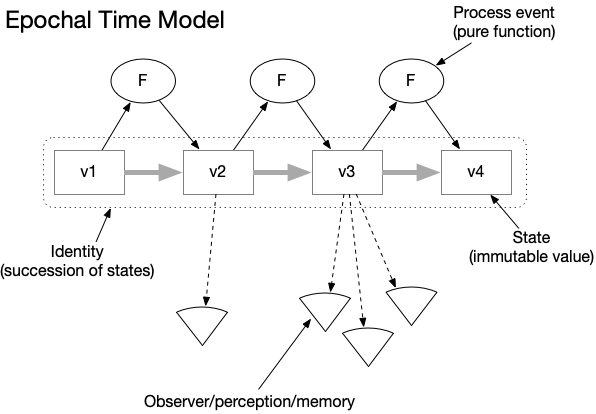The Conservative Self
To understand what we call the Self, we first must see what Selves are for. One function of the Self is to keep us from changing too rapidly...If we changed our minds too recklessly, we could never know what we might want next. We’d never get much done because we could never depend on ourselves.
Consider Hickey’s epochal time model:

What is the function here of Identity (i.e., the Self)? What makes a succession of states more than just a sequence of values?
Consider identity = id + entity. That is, an identity is a unique instance (with a primary key id) of an entity of a certain type.
What makes something an entity of a certain type? It must satisfy an entity spec, i.e. maintain model invariants, including but not limited to the syntactic schema.
Can something have multiple “id-entities”? Sure. Something can be a Study with ID 123 as well as an Activity with ID 234 if (a) each value over time passes validation as both a Study and an Activity, and (b) each value over time resolves to the same unique individual within each of the Study and Activity model abstractions – i.e., as a function of the data attributes that these models choose to consider in order to distinguish individuals, each value is a “state” of “the same” individual.
# expression of a non-unique name assumption
study:123 owl:sameAs activity:234 .
To achieve conservation of id-entity, to successfully associate an id-entity – an identity – with a sequence of values, to proclaim that sequence to be a succession of states, is to feel confident that certain model invariants are being maintained across the values’ history, that change is not reckless, that one can depend on something.